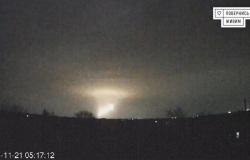Trading of liquefied natural gas (LNG) futures on the Intercontinental Exchange (ICE) market reached unprecedented levels in October, according to exchange data and feedback from market participants. This significant jump is part of a dynamic preparation for the winter season, despite sluggish demand in certain Asian regions.
During the month of October, trading volumes for Japan Korea Marker (JKM) LNG futures on ICE recorded an increase of 32.61% year-on-year, reaching a total of 100 755 batches, or approximately 19.38 million metric tons of LNG or 305 cargoes. This volume represents an increase of 5.36% from September, growth fueled by substantial transactions recorded on October 25, with over 10,000 lots traded for contracts spanning December 2024 to December 2026.
Trading activity on the rise despite weak demand signals
According to the observations of a broker, the high level of transactions could indicate direct operations without the intervention of intermediaries, suggesting risk hedging strategies on the part of certain players. A Singapore-based trader corroborated this analysis, pointing out that these transactions could be driven by hedging practices in anticipation of energy market uncertainties.
As part of Platts’ Market On Close evaluation process, JKM LNG futures contract volumes for near-term delivery maturities reached 3,185 lots in October, up 15.4% from to September and a jump of 198.29% compared to the previous year.
Record Increase in Open Interest on JKM LNG Futures
Open interest for JKM LNG futures, which indicates the number of open positions awaiting settlement, also reached an all-time high, with 131,678 lots at month-end. This total includes 129,068 lots for standard futures contracts and 2,610 lots for immediate delivery futures contracts. This record level reflects increased anticipation of LNG market activity for the winter period, when climate forecasts can influence energy needs.
Despite this increased futures activity, JKM LNG options saw a 65% decline in traded volumes, falling to 800 lots. Open interest for options stood at 12,100 lots, marking a decline of 13.39% from September.
LNG spot prices and demand conditions in Asia
Spot LNG prices in Asia remained relatively stable during October, with the JKM benchmark price remaining around $13.384/MMBtu, up slightly from $13.219/MMBtu in September. In the Japan-South Korea-Taiwan-China (JKTC) region, demand remained weak in October as several utilities secured supplies for the winter.
In China, where LNG inventories are high, some market participants have opted for spot market sales, hoping that prices will fall to $12/MMBtu to attract new Chinese buyers. This context of moderate demand could, however, be disrupted by unforeseen climatic variations, such as a colder winter than expected.
Limited arbitration between Asia and Europe
While the market monitors supply developments in the Atlantic basin, arbitrage opportunities in July between Europe and Asia became rare due to narrowing price spreads. According to Platts, the East-West arbitrage gap for January/December was estimated at less than $0.50/MMBtu, making it less attractive to move U.S. cargoes to Asia. Nonetheless, some traders are considering redirecting cargoes to the Far East due to low freight rates and vessel availability.





